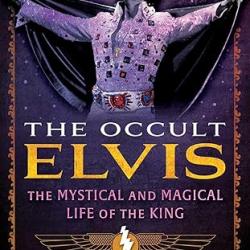By Tim Muldoon - May 12 2009
Sexual desire is a profound dimension of the experience of being an enfleshed human being, and can open a person to the transcendence of "going out of oneself" (Greek ek-stasis or "ecstasy") toward another person. Like all desires, it has a dynamism which human beings and societies are challenged to cultivate and to prune, in service to the good, the true, and the beautiful.
A great challenge facing the cultures of the West is the lack of a shared grammar of desire. Some of the perennial words remain: words like "love" and "marriage," even though we may understand them very differently. Other words have become rather antiquated, like "courtship" and even "dating." Still others are relatively modern-"sex" is not a concept that Shakespeare would have used except in distinguishing males and females from one another. The lack of a common grammar of desire points to a breakdown in older models of intimate relationship-forming. The ways that societies understood and ordered the experiences of desire are changing; and the critical questions we face in the twenty-first century have to do with how we construe the nature of desire, and how as a society we wish to help people channel it for a greater good. For if there is a constant from then till now, it is this: response sexual desire is always and everywhere a social phenomenon.
Of course, advertisers know this, and have mastered the art of manufacturing and exploiting sexual desire for the sake of profit. What makes the social question of sexual desire so complicated today is precisely the fact that most of us find it incredibly difficult to disentangle manufactured desire from "authentic" desire. When are we in love with a person, and when (to borrow from Saint Augustine) are we rather in love with the idea of being in love? When does sexual desire lead us toward a greater good-for another person, for a community, for ourselves-and when does it seek to exploit others?
The Catholic theological tradition flies with the wings of faith and reason, meaning that in its discernment of sexual desire it relies both on the ability of people to think carefully about the world and on the belief that God is active in human history, manifesting to us truths about the way that he created us to live within it. Early theologians drew conclusions about the proper ordering of sex by looking at the Greek philosophical tradition, especially the Stoic belief in "natural law"-the order in the world, observable by all people-to conclude that sex was for procreation, and that the household codes of marriage and family-raising were therefore normative social goods designed for the well-being of the society.
Jesus' own words on marriage pointed back to the state of the first man and woman before their disobedience of God's law: they were a gift to one another, given the mission to help God build a new creation. The Jewish scriptures had used the image of marriage to describe God's relationship to Israel; the author of the letter to the Ephesians in the New Testament similarly used the image of marriage to describe the relationship between Christ and the Church. Both images recall the fundamental understanding that marriage is a social reality created by God for the sake of helping to build the divine order. Saint Augustine observed, though, that because of sin, human beings were likely to be misled by the experience of sexual desire: was not the consequence of the Fall the experience of shame at being naked? Marriage in the Church, he reasoned, was a pledge to participate in the original order that God had ordained. Hence the right re-ordering of sexuality-that is, the return to the way God had ordained it before the corrosive effects of sin entered the world-was within the context of a marriage ordered toward the social good of procreation.
The sacred vow of marriage between a man and a woman before God came to be understood as that which bridges the "split" (Latin sexus, from which we get our word "sex") in human nature: between men and women, and between our true and false selves. Marriage is, then, that which points toward the perfection of what God had intended in creation: unity between people, Restormirroring the intimacy into which God calls his beloved creatures. Marriage is, in Catholic tradition, between a man and a woman because their union represents the overcoming of the divide which has resulted from sin. The restoration of their original unity is symbolized in sex, through which they both "become one flesh," in the words of the book of Genesis, and often participate in God's ongoing work of creation.
Tim Muldoon is a Catholic theologian, author, speaker, and retreat leader specializing in the ways that Church traditions speak to contemporary life. He has written three books and a number of academic and popular essays on the themes of young adult spirituality, Ignatian spirituality, theology in postmodernity, sexuality and marriage, and adoption issues. He currently teaches in the Honors Program of the College of Arts and Sciences at Boston College, and also develops programs related to the Jesuit, Catholic mission of the University.
1/1/2000 5:00:00 AM




